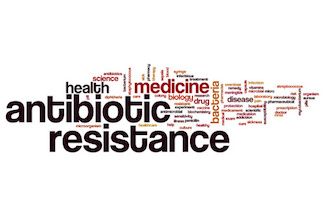Public Health Watch: Pew Report Highlights Lagging Antibiotic R&D Efforts
New drugs likely won’t meet resistance challenges ahead, authors say.

After a year-plus marked by little, if any, positive news from an infectious disease and public health perspective, specialists in these fields can be forgiven for placing their hopes on a better future.
Unfortunately, when it comes to the threat posed by antibiotic-resistant pathogens, that future does not look particularly bright.
According to report released on March 9 by Pew, there are currently 43 new antibiotics in development. Although these new drugs would “potentially address many, but not all, resistant bacteria,” they still likely won’t sufficiently bolster the Rx armamentarium to meet the challenges posed by resistant pathogens in either the short or long term.
“[Our] assessment clearly shows there continue to be too few products in development globally to meet current and anticipated patient needs; worse, even fewer are the type of novel antibiotics needed to defeat increasingly resistant bacteria, or superbugs, that represent a dangerous growing public health threat worldwide,” report co-author Wes Kim, PhD, Pew’s Antibiotic Resistance Project Senior Officer, told Contagion. “Our research highlights the urgent need to accelerate and support the development of new antibiotics—namely with legislation alleviating challenges in the broken antibiotics market, as well as sustained, significant funding into antibiotics research and development.”
On the positive side, at least 19 of the antibiotics in clinical development have the potential to treat infections caused by Gram-negative “ESKAPE” pathogens, with 15 having potential activity against carbapenem-resistant/extended spectrum β-lactamase (ESBL)-producing Enterobacteriaceae, Acinetobacter baumannii, and Pseudomonas aeruginosa, according to Dr. Kim and his colleagues.
In addition, at least 10 of the drugs in the pipeline, if approved, could address infections caused by drug-resistant Neisseria gonorrhoeae or Clostridioides difficile. However, only roughly 1 in 4 of the antibiotics in development “represent a novel drug class” or employ a new mechanism of action, and none of those that do are potentially active against Gram-negative ESKAPE pathogens or pathogens on the World Health Organization’s “critical threat” list. Indeed, nearly half of the novel products in development are designed for C difficile.
Moreover, of the 38 companies with antibiotics in clinical development, only two rank among the top 50 pharmaceutical companies by sales. In fact, more than 70% of the companies are considered “pre-revenue, meaning that they have no products on the market that they previously developed, commercialized, and marketed,” Pew found.
Perhaps most troubling, the drugs that are in development are a long way from coming to market. The Pew researchers report that, as of December 2020, 15 of them were in phase 1 trials, 13 were in phase 2, and 13 were in Phase 3, with 2 having submitted new drug applications to the US Food and Drug Administration. Historically, about 60% of drugs that enter phase 3 will be approved, Kim and his colleagues wrote.
Among the solutions they offer to address these R&D shortcomings, the authors recommend “package of incentives” designed to overcome “the economic challenges that companies face in bringing an antibiotic to market,” including financing mechanisms such as a delinked subscription model, which pays for new products based on their potential public health value rather than volume sold, and insurance reimbursement reform that would derive more equitable rates for the use of newer drugs.
And, of course, enhanced stewardship.
“The status of the pipeline today paints a grim picture for the future of antibiotics, and our findings underscore the urgent need to stabilize and reinvigorate the pipeline of potential treatments,” Kim said. “If we don’t take steps now to bolster the antibiotics pipeline while preserving the effectiveness of existing drugs, we could find ourselves facing a post-antibiotic era where we don’t have drugs needed to treat bacterial infections. This would change modern medicine as we know it, and make simple medical procedures like surgeries, chemotherapy, and dialysis too dangerous to pursue.”
As if the present isn’t challenging enough.
